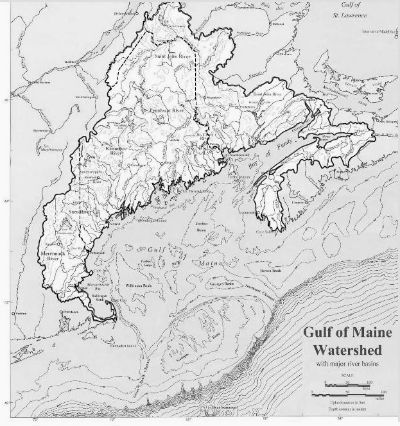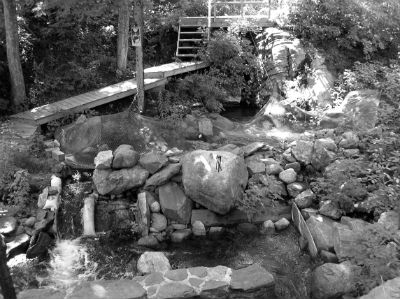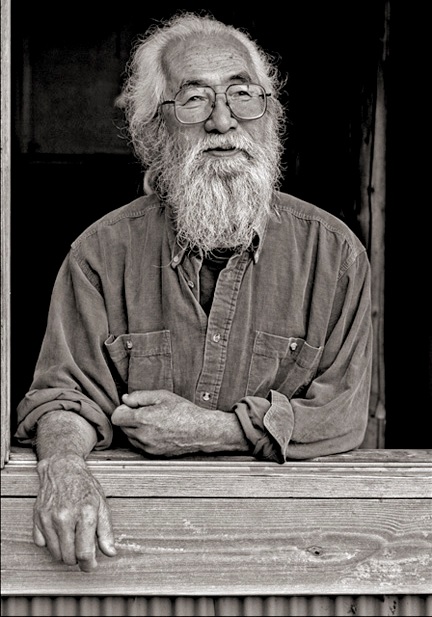Big History, Bioregionalism and Geopoetics
Almanac: Evolution: A Big History Perspective
Bioregionalism and Big History are part of the new way of looking at our homes and at the Cosmos that is unfolding around our planet Earth today. Bioregionalism is Big History in action. This writing shares some views of a bioregionalist poet about Big History from his home.
I grew up in the north-east corner of the United States, in the State of Maine, in a coastal town called Belfast. The ocean touches the land there, and that particular body of saltwater is called the Gulf of Maine. The Gulf of Maine touches three states (Maine, New Hampshire and Massachusetts), as well as two Canadian provinces (New Brunswick and Nova Scotia).

When I was growing up, the newspapers, radio and television reported about Maine news, and – on weekends – Maine and New England news.
We had no idea what was happening in New Brunswick and Nova Scotia, even though we were connected with them by land, air and water. We did not know what was happening in rivers, forests, lakes and ocean in the other states and the provinces. We rarely knew what was happening among animal and plant populations, especially among those for whom we were a stop along a much larger migratory route.
During my high school years, I became interested in the earlier human inhabitants of the region, the pre-European populations who lived here. Their place names were so much different from ours. The names seemed functional – if you learned their names of the places along the river, you would know where you would need to carry around the rapids, where the sturgeon came, where people gathered to harvest clams or to smoke fish. A map with indigenous place names became your guide to what was happening on that part of the river, in the forest or along the shore. If you had the place names in your memory, you could survive in those places. You were informed by the place names, and learned much about the region from them. The region seemed to be defined more by rivers, portages and seasonal food sources than by lines on a map. There were no international borders requiring passports, no arbitrarily drawn lines on the map.
As I also became interested in forest ecology activism, I learned that
the forest stopped at none of the human borders. The woods of northern New England and eastern Canada were being assaulted by the same multinational corporations using clear-cutting, along with herbicide and pesticide applications to destroy the natural forests of the region and replant them with a monoculture suited for the pulp and paper industry.
We heard about the nuclear power plant in Maine, and of the one in New Hampshire, but much less often about the nuclear plants in Massachusetts, and pretty much never heard about the Point Lepreau nuclear plant in New Brunswick.
We did not think that much about who was upwind of us, until it became clear that acid rain was poisoning Eastern lakes and forests, and that the pollution was coming to us in the wind from coal-burning power plants in the Midwestern United States. We did not think about who was upriver, until the dioxin in the fish helped us learn about the chlorine-bleaching process being used by paper plants upriver in Maine and New Hampshire.
I wanted to somehow have a wider sense of place, a larger sense of Home.
In 1973 I traveled west to live in northern California at the home of poet Gary Snyder as his ‘poet's apprentice’. The Big Idea that summer was bioregionalism, and there were many conversations trying to really nail down what that meant. People were looking for ways to define their home, their place, their community, in ways other than the arbitrary lines put onto the map by humans to create states, countries and political units or ways to collect taxes and enforce laws.
We were looking at the maps and trying to find other ways of defining who we were, and where we were, in the world. We were looking at rivers and mountains, oceans and deserts, plant and animal ranges, watersheds and plate tectonics. The first education in bioregionalism came in trying to define your own region. In order to come up with an informed answer, you really had to learn a lot about where you were. Where did your water come from, and where did it go? Where did the wind usually come from? Who are the local plants and animals, where does the forest mix change, what is over the next ridge?
We started seeing ourselves as citizens of biological communities and, as good citizens, we had to learn to live well within those communities. How do you live within the bioregion as a good citizen? – this involves learning as much as you can about the natural cycles of the place where you live, and learning how to live as a part of those cycles, as a part of that community.
This is an ongoing, lifelong education.
Several decades into bioregional education, I started thinking about all of the species who pass through my bioregion, the great migratory tribes whose lives pass through my region on their way to some other place, at one time of the year or another. Their home regions cover a much wider range than my own. Here on the lake, we welcome the loons, the eagles and osprey, herons, bobolinks and so many more. We watch for turtles in the road. We welcome
the alewives as they swim from the ocean into our lake, through a series of newly-built structures, human-made to assist them in their journey.

We look to the milkweed in late summer for monarchs, rising up to make their journey to Mexico. As a bioregionalist, I want my own bioregion to continue to provide the shelter and sustenance these travelers have found here, but now I feel that I must also be concerned with the rest of their journeys, the flyways, the migratory paths and ocean routes, all of the places where they stop to feed or rest – the places that are fast disappearing due to human use. Through these travels, as well as the movement of wind and water, my bioregion extends to the boreal forests, the songbird destinations in South America, the Sargasso Sea, all of the many parts of the world to which my home place is connected by movement.
The bioregion is fluid. Water, air and life flow through it every day. Plant populations change, animal populations change, human populations change. The climate changes, everything evolves, plates shift and light passes through.
My poet friend Nanao said that his bioregion was the Milky Way. He hoped to plant trees on Mars while hiking the length of the Milky Way. Our Universe is expanding. As we look out from our own bodies, we find that our connections reach farther and farther.

The Big Idea here is Big History, and I am wondering what we do with it as individuals. How do we live our lives as citizens of Big History? It seems to me that living with a bioregional ethic gives us such a way. We can embrace Big History, but learn to live locally. I can think about my region back when
the granite was liquid, when the glaciers covered the land where we live now, when caribou were here, when no European had set foot on the land, when there was no acid rain, when the waters were full of fish, or I can try to think back (or ahead) to a time when this planet did not exist… but there was matter, moving in ways that I do not understand.
I want most to learn how best to live as a citizen of a biotic community, how to be a partner in the natural workings of that place, and to lead a life informed by a growing understanding of the multitude of cycles and forces within which I am living. Bioregionalism brings me to that hope, to that way of seeing myself on this planet. Big History extends that hope to the ends of the Universe and beyond.
I came from the sky
green amber inside
the meteorite
then I was lichen
what the ice remembers
the taste of granite
what do the stars know
